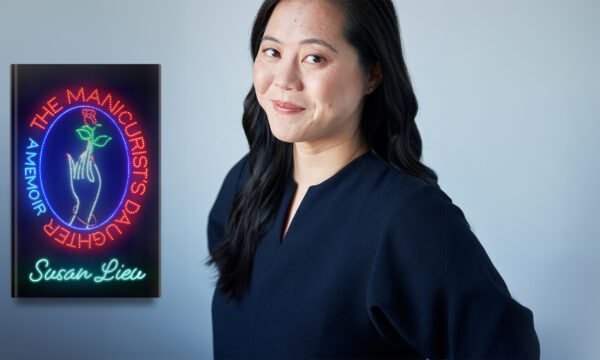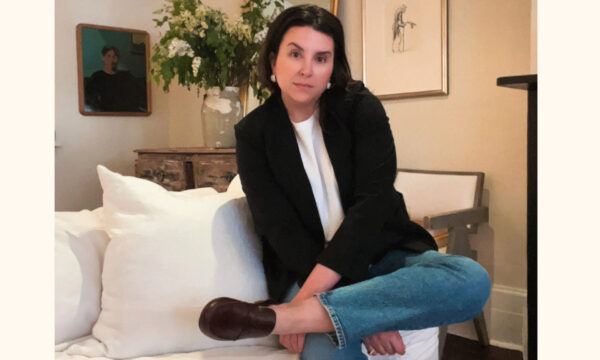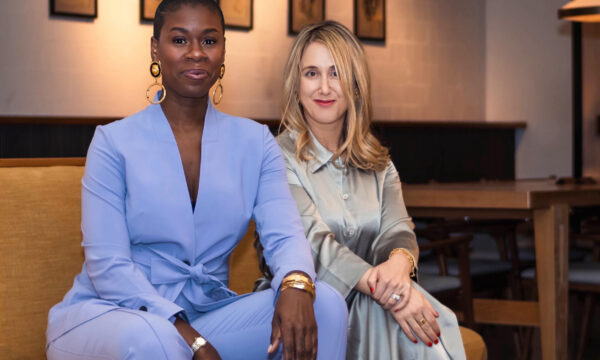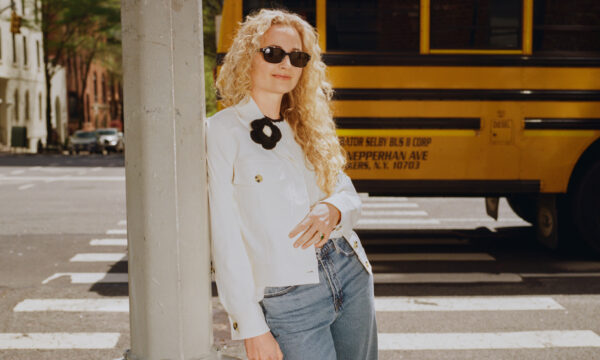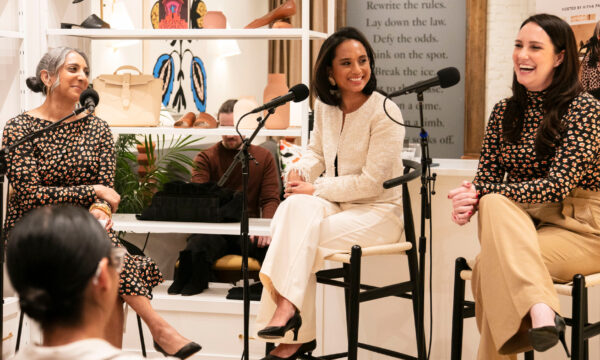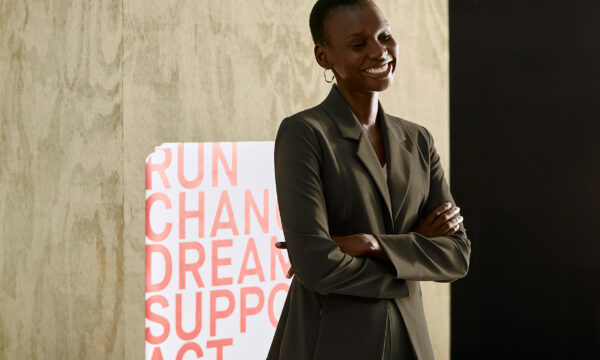
Image courtesy of Julie Satow.
“Fashion Is Spinach”: An Exclusive Excerpt
Get a first look at Julie Satow’s upcoming book, When Women Ran Fifth Avenue: Glamour and Power at the Dawn of American Fashion.
In her upcoming book, When Women Ran Fifth Avenue: Glamour and Power at the Dawn of American Fashion (Doubleday), award-winning journalist Julie Satow explores the rise of the American department store through the lens of three remarkable women whose stories have been lost to history until now. Both a vivid portrait and an insightful look into the inner workings of the fashion industry, it’s a must-read for anyone interested in fashion, New York City, or the history of women in the workplace. Below, find an exclusive excerpt from the chapter “Fashion Is Spinach,” a thrilling look at the early days of knock-offs.

Image courtesy of Julie Satow.
Fashion Is Spinach
In the summer of 1925, Elizabeth Hawes had just completed her studies at Vassar and was newly arrived in Paris. This was years before Dorothy would choose Hawes as one of the first designers to be featured in Lord & Taylor’s American Look campaign. Hawes was still completely green and eager to absorb all she could about the world of French fashion. That morning, she had arrived on rue Faubourg St. Honoré to start work at a typical Parisian copy house. In these years, even as copying designs was rampant on Seventh Avenue, it was also a scourge in Paris, where the city’s cobblestoned side streets were filled with small dressmaking establishments where customers could purchase less expensive versions of haute couture dresses. The particular copy house where Hawes reported for work was run by the diminutive Madame Doret, a savvy businesswoman whose main claim to fame was that she never copied a dress unless the original was in her possession. Hawes pulled open the heavy stone-rimmed door and walked through a dark, untidy hall and up a winding stair until she reached a large brass nameplate with the word “DORET” imprinted in block letters. The door to the copy house was usually open, although there was a gong attached, and if ever there was suspicion of an approaching police raid—copying was illegal—it was locked. Only customers who were properly vetted, those vouched for by other trusted sources, could purchase copies from Madame Doret. If an unknown person appeared at the door, they were shown a few simple, original dresses that the copy house had dashed off, and that served as its front, and sent on their way. If they passed muster, the customers were ushered into a small salon, where they were presented with several copies of couture outfits, a Lanvin Breton suit, maybe, or a handkerchief dress by Vionnet. Most were partially finished, in the process of being sewn for other customers. and it was from these incomplete outfits and a handful of sketches that shoppers placed their orders.
Madame Doret’s copies were nearly perfectly executed—made with the exact material, color, and embroidery as the originals. By working at the copy shop for a few months, Hawes discovered how this was accomplished. “I became sufficiently trusted to become embroiled in the business of stealing,” she wrote in her memoir, Fashion Is Spinach: How to Beat the Fashion Racket. (The book’s title was taken from a popular 1928 New Yorker cartoon that featured a child staring unhappily at a plate of spinach. “It’s broccoli, dear,” the mother says, imploringly. “I say it’s spinach,” the child responds. “And I say, the hell with it!”)
Some of Madame Doret’s originals were legitimately purchased, with Hawes and others posing as customers and placing orders at the important couturiers. Others came from trusted customers, whose wardrobes consisted of both originals and bootlegged copies and who would share their originals in exchange for discounts on the copies. Mistresses were another source. Madame Doret’s best mistress source was the kept lover of a famous designer: with an unending supply of originals, she ran a side hustle renting the outfits out to various copy houses.
Buyers were the final source for copies. When American manufacturers and department stores sent their buyers to France, the buyers had to rely on their Paris-based counterparts, who worked in what was known as resident buying offices, to arrange for fashion show tickets, access to various fashion events, and assistance shipping their purchases home. One day, Madame Doret enlisted Hawes in a ruse that involved a resident buyer, a beaver coat, and several stolen Chanel dresses. Madame Doret had a particularly close friendship with Madame Ellis, an American who had worked in a resident buying office in Paris for years. “She was about fifty-five, exceedingly attractive, and pretty smart. Anything she lacked in brains she had fully made up for in experience,” wrote Hawes. Madame Doret requested that Hawes wear her beaver coat to meet Madame Ellis at her office one afternoon. “A fur coat in Paris is quite a rarity among the working class. Mine turned out to have a special value.” Hawes found Madame Ellis alone in her office, surrounded by a large pile of boxes from Chanel. “The boxes were hastily opened, dresses pulled out and shaken from their tissue paper covers,” recalled Hawes. “Put them under your coat,” Madame Ellis told her urgently, “and get them back here as fast as you can.”
Hawes, her coat bulging with the booty, flew downstairs, jumped into a taxi, ran up the backstairs of the copy house, and unloaded her loot onto the floor of Madame Doret’s stockroom. “The workgirls had gone home. The fitters were there. They took the clothes and made accurate patterns of them, while I made accurate sketches. Madame Doret even more accurately examined every line. made notes on buttons, belts, cut bits of material from the seams, and looked over the finishing.” When it was all over, “We had six or eight new Chanels to sell.” Hawes then jammed the dresses back under her fur coat, jumped into another taxi, and rushed back to a waiting Madame Ellis. The resident buyer then carefully wrapped the models in their tissue paper and their Chanel boxes, “and off they went to New York on a fast boat.”
Hawes’s career as a knockoff artist did not end there. Following her stint at Madame Doret’s copy house, she took a position as a sketcher for an American manufacturer. “The situation among American buyers in Paris during the years I worked there was very simple. As a buyer of expensive French models for American mass production, you stole what you could and bought what you had to,” she wrote. “Almost every important buyer took to the first showing of every couturier a sketcher. The sketcher was ostensibly an assistant buyer. Her real job was to remember as many of the models as possible and subsequently sketch them for the buyer to copy in New York later.”
Sketching was not easy. For one thing, there was nowhere to sketch. At fashion shows, attendees were handed a program with the number and name of each dress. As the models sashayed by, buyers were meant to check the numbers on the program that interested them. Then, when they were leaving the show, they handed those numbers to a saleswoman who would make an appointment for the buyer to return and review the selected pieces, after which they would place their orders. Sketchers had only these skimpy programs on which to ply their trade, surreptitiously scribbling their marks in the hopes of going unnoticed. Evading detection was critical, for once a sketcher was no longer incognito, she could be barred from future shows, essentially ending her career. “All the houses knew perfectly well that one in every eight people at an opening was a sketcher. The sketchers were all young,” Hawes wrote, and “not particularly well dressed. A sketcher has a special photographic way of looking at a dress, engraving its image on her mind, marking her program a little too freely.” Some small houses begrudgingly allowed sketchers to work, but the important couturiers ruthlessly enforced the rules.
The last challenge to being a sketcher was the issue of memory. At one of Hawes’s first shows in her new job, held at the couture house Premet, she was planted between two buyers who worked for her boss, the American garment manufacturer. “Every time one of them wanted a dress sketched, she’d poke me in the ribs with her elbow. I’d settle my eyes on the dress and leave them there until the mannequin who wore it had made her last turn, her final flip of the fanny. . . . After that I would very carefully not look at anything else until I got another poke in the ribs.” Hawes made shorthand notes on her program as each requested dress passed, and as soon as the show ended, her mind swimming with images, she ran outside and dove into the first taxi she found. Back at her apartment, gulping down a glass of milk for lunch, Hawes drew up her notes. “Then, into another taxi and so to Lanvin at 2:30. After Lanvin, 5:00 back to Premet to look over the clothes while the buyers bought one or two. By seven, I’d be home again. correcting the Premet sketches and making drawing of the notes on Lanvin. By 7:30, I must be out again with a book containing the finished sketches from the day before. If I didn’t catch the buyers while they were dressing for an evening of gaiety, I never would.”
In 1920s Paris, fashion shows were often elaborate affairs. At Jean Patou, for instance, “his showrooms were vast, delicately Louis something-or-other. and jammed with the united buying strength of the world,” Hawes wrote. “We sat with our backs to the long and tightly closed windows. The Place Vendôme lay peacefully without. Within, the haze of cigarette smoke became thicker and thicker as Patou poured out his new elegance, his new colors, his champagne.” Chanel, meanwhile, “the battle cry of the world of fashion for nearly a decade,” was the most exclusive. With only two small salons and a limited number of tickets, only the biggest buyers could gain access. “We got in, our hats over one ear, our coats half pulled off our backs,” Hawes recalled. “We drove our way through a mob of screaming men and women who filled the rue Cambon with their wailing. They were wailing because they didn’t have any tickets and Chanel was in a position to be firm.” While at shows like Patou, champagne flowed freely as attendees socialized, at Chanel there were no drinks and no friendly chatter. “Nothing but very tall saleswomen posted in every corner, overlooking the crowd, fixing their icy stares on every little sketcher and every mink-coated buyer alike. No long program to write on. Just a small slip of paper. No long looks at the models. They simply flew in and out.” The Chanel show was, Hawes wrote, a “violent mental exercise. If you made any more moves with your pencil than enough to write the equivalent of a number, someone suddenly leaned over your shoulder and grabbed your paper out of your hand.”
After the Chanel show, the buyers headed straight for the tall, chilly saleswomen, crowding around, elbowing one another, pleading for the first appointment to the showroom. Once they made it to the Chanel showroom, they were greeted with a madhouse. “Clothes were lying in tired piles on every chair. Harassed salespeople were dashing about, telling their assistants for the love of heaven to find No. 234. The minute anyone heard someone else asking for No. 234, every buyer in the place asked for it too.” Hawes’s two buyers directed her to a fitting room, and one remained stationed outside the door, while the other went foraging for outfits. Every few minutes, Hawes, comfortably ensconced in the room, isolated from the surrounding chaos, was handed a dress to sketch, which she quickly executed before handing it back to the buyer stationed outside. “We got away with practically the whole collection. Then, carried away by their success, one of the buyers began stuffing bunches of samples into her mink pockets. The other one tore fringe off all the fringed dresses so she could have it copied in New York. Finally, one of them stole a belt off a dress.” Shortly thereafter, Chanel prohibited any belts from being carried into the fitting rooms.
Hawes’s career as a sketcher, and her time in Paris, came to an end when her subterfuge was discovered. “One day, during my third and last season of sketching, the summer of 1926, I had an appointment to meet my buyers at Miller Soeurs,” she wrote. Miller Soeurs had once been a copy house but it had lately begun creating original designs. Hawes arrived at the show early. “When I got there, they just took one look at me,” she recalled. “’We’re sorry, but we won’t let you in.’ I said, ‘You’re perfectly right,’and left, feeling much better.”’ After a bicycle tour in the French countryside and a holiday in Italy, Hawes left sketching behind forever, decamping for New York.
From WHEN WOMEN RAN FIFTH AVENUE: Glamour and Power at the Dawn of American Fashion by Julie Satow. Reprinted by permission of Doubleday, an imprint of the Knopf Doubleday Publishing Group, a division of Penguin Random House LLC. Copyright © 2024 by Julie Satow.






